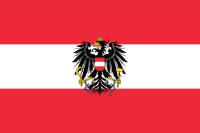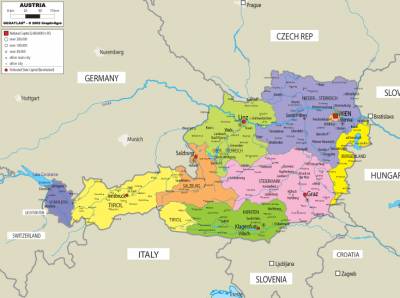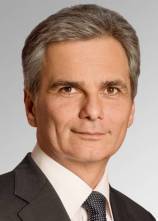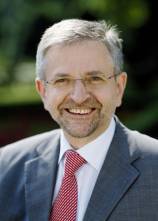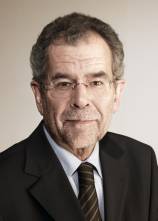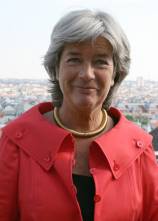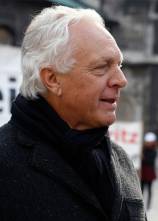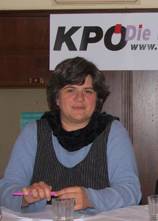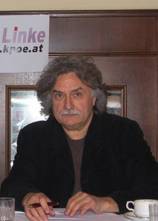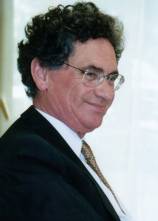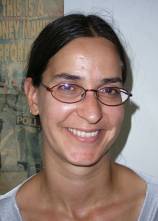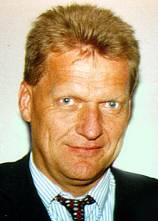FEDERAL REPUBLIC OF AUSTRIA
Republic of Austria (German: Republik Österreich) is a landlocked country of roughly 8.3 million people in Central Europe. It borders both Germany and the Czech Republic to the north, Slovakia and Hungary to the east, Slovenia and Italy to the south, and Switzerland and Liechtenstein to the west. The territory of Austria covers 83,872 square kilometres (32,383 sq mi), and is influenced by a temperate and alpine climate. Austria's terrain is highly mountainous due to the presence of the Alps; only 32% of the country is below 500 metres (1,600 ft), and its highest point is 3,797 metres (12,460 ft). The majority of the population-about 90%-speaks German, which is also the country's official language.
The Parliament of Austria is located in Vienna, the country's largest city and capital. Austria became a federal, parliamentarian, democratic republic through the Federal Constitution of 1920. It was reintroduced in 1945 to the nine states of the Federal Republic. The head of state is the Federal President (Bundespräsident), who is directly elected by popular vote. The chairman of the Federal Government is the Federal Chancellor, who is appointed by the president. The government can be removed from office by either a presidential decree or by vote of no confidence in the lower chamber of parliament, the Nationalrat. Voting for the federal president used to be compulsory in Austria, but this was abolished in steps from 1982 to 2004.
The Parliament of Austria consists of two chambers. The composition of the Nationalrat (183 seats) is determined every five years (or whenever the Nationalrat has been dissolved by the federal president on a motion by the federal chancellor, or by Nationalrat itself) by a general election in which every citizen over 16 years (since 2007) has voting rights. While there is a general threshold of 4 percent for all parties at federal elections (Nationalratswahlen), there remains the possibility to gain a direct seat, or Direktmandat, in one of the 43 regional election districts.
The Nationalrat is the dominant chamber in the formation of legislation in Austria. However, the upper house of parliament, the Bundesrat, has a limited right of veto (the Nationalrat can-in almost all cases—ultimately pass the respective bill by voting a second time. This is referred to as Beharrungsbeschluss, lit. "Vote of persistence"). A convention, called the Österreich -Konvent was convened in June 30, 2003 to decide upon suggestions to reform the constitution, but failed to produce a proposal that would receive the two thirds of votes in the Nationalrat necessary for constitutional amendments and/or reform.
Federal President of Austria - Heinz Fischer
- Residence - Hofburg Imperial Palace
- Term length – Six years (renewable once; terms may be consecutive)
- Inaugural holder - Karl Seitz Karl Renner
- Formation - 5 March 1919, 20 December 1945
- Website - www.hofburg.at
The Austrian Federal President (German language: Österreichischer Bundespräsident) is the federal head of state of Austria. Though theoretically entrusted with great power by the constitution, in practice the President acts, for the most part, merely as a ceremonial figurehead. The President of Austria is directly elected by universal adult suffrage once in every six years. His or her offices are located in the Leopoldine Wing of the Hofburg Imperial Palace, in Vienna. Many former Presidents have gained tremendous popularity while in office, and no incumbent has ever lost a bid for re-election. Since 2004 the office has been occupied by Heinz Fischer.
Flag of the Federal Republic of Austria
States of Austria
As a federal republic, Austria is divided into nine states (German: Bundesländer). These states are then divided into districts (Bezirke) and statutory cities (Statutarstädte). Districts are subdivided into municipalities (Gemeinden). Statutory Cities have the competencies otherwise granted to both districts and municipalities. The states are not mere administrative divisions but have some legislative authority distinct from the federal government, e.g. in matters of culture, social care, youth and nature protection, hunting, building, and zoning ordinances. In recent years, it has been discussed whether today it is appropriate for a small country to maintain ten parliaments.
Current parties in parliament
Federal Chancellor are the Chairman of the Social Democratic Party of Austria (SPÖ) and Minister of Infrastructure, Werner Faymann, Wilhem Molterer, Chairman of the Austrian People’s Party (ÖVP), incumbent Vice-Chancellor and Minister of Finance. Represented in Parliament are the Austrian Freedom Party (FPÖ) with top candidate Heinz- Christian Strache, the Greens led by Alexander Van der Bellen and the Alliance for the Future of Austria (BZÖ) with Jörg Haider.
Election results
- SPÖ 29.7% (-5.6) 58 seats
- ÖVP 25.6% (-8.7) 50 seats
- FPÖ 18.0% (+7.0) 35 seats
- BZÖ 11.0% (+6.9) 21 seats
- Greens 9.8% (-1.2) 19 seats
Leading candidates
Werner Faymann (SPÖ) |
Wilhelm Molterer (ÖVP) |
Alexander Van der Bellen (Greens) |
Heinz-Christian Strache (FPÖ) |
Jörg Haider (BZÖ) |
Heide Schmidt(LIF) |
Fritz Dinkhauser(FRITZ) |
Mirko Messner and Melina Klaus(KPÖ) |
|
Alfons Adam(DC) |
Sonja Grusch(LINKE) |
Wilfried Auerbach(RETTÖ) |
Climate
This European heartland is home to a wide variety of landscapes, climates and flora. Austria’s landscapes include major and minor mountain ranges, hills and plains. The foothills of the Alps and Carpathian Mountains, the Vienna Basin and parts of Austria’s share of the Pannonian plains in the east are the most important areas of settlement and economic activity. The country’s highest mountain is the Grossglockner (3,797m or 12,457 feet), and the most important river is the Danube, which flows across Austria for some 350 km (210 miles).
Austria lies in a temperate climatic zone with the influence of a moderate Atlantic climate felt more strongly in the west and northwest while the east reflects a more continental climate. Precipitation levels drop significantly from west to east and rise with altitude. The diversity of topographical and climatic conditions results in a wide variety of flora and fauna. Austria is one of Europe’s most heavily wooded countries (47% of total area).
Demographics
Austria's population estimate in January 2009 was 8,356,707. The population of the capital, Vienna, exceeds 1.6 million (2.2 million including the suburbs), representing about a quarter of the country's population and is known for its vast cultural offerings and high standard of living. In contrast to the capital, other cities do not exceed 1 million inhabitants: the second largest city Graz is home to 250,099 inhabitants, followed by Linz (188,968), Salzburg (150,000), and Innsbruck (117,346). All other cities have fewer than 100,000 inhabitants.German, Austria's official language is spoken by 88.6% of the population-followed by Turkish (2.3%), Serbian (2.2%), Croatian (1.6%), Hungarian (0.5%), and Bosnian (0.4%).
The Austrian federal states of Carinthia and Styria are home to a significant indigenous Slovene speaking minority with around 14,000 members (Austrian census; unofficial numbers of Slovene groups speak of up to 50,000). In the east-most state, Burgenland (formerly part of the Hungarian half of Austria–Hungary), about 20,000 Austrian citizens speak Hungarian and 30,000 speak Croatian. Of the remaining number of Austria's people that are of non-Austrian descent, many come from surrounding countries, especially from the former East Bloc nations. So-called guest workers (Gastarbeiter) and their descendants, as well as refugees from the Yugoslav wars and other conflicts, also form an important minority group in Austria. Since 1994 the Roma-Sinti (gypsies) are an officially recognised ethnic minority in Austria.
According to census information published by Statistik Austria for the year 2001 there were a total of 710,926 foreign nationals living in Austria. Of these, 124,392 speak German as their mother tongue (mainly immigrants from Germany, some from Switzerland and Bolzano-Bozen, Italy) The next largest populations of linguistic and ethnic groups are 240,863 foreign nationals from the former Yugoslavia (Serbian being the largest number of these at 135,376, followed by Croatian at 105,487); 123,417 Turkish nationals; 25,155 whose native tongue is English; 24,446 Albanian; 17,899 Polish; 14,699 Hungarian; 12,216 Romanian; 7,982 Arabs; 6,902 Slovenes (not including the autochthonous minority); 6,891 Slovaks; 6,707 Czech; 5,916 Persian; 5,677 Italian; 5,466 Russian; 5,213 French; 4,938 Chinese; 4,264 Spanish; 3,503 Bulgarian. The populations of the rest fall off sharply below 3,000. Between 200,000 and 300,000 ethnic Turks (including minority of Turkish Kurds) currently live in Austria. They are the largest single immigrant group in Austria. Austria's mountainous terrain led to the development of many distinct German dialects. All of the dialects in the country, however, belong to Austro-Bavarian groups of German dialects, with the exception of the dialect spoken in its western-most Bundesland, Vorarlberg, which belongs to the group of Alemannic dialects. There is also a distinct grammatical standard for Austrian German with a few differences to the German spoken in Germany. As of 2006, some of the Austrian states introduced standardised tests for new citizens, to assure their language ability, cultural knowledge and accordingly their ability to integrate into the Austrian society. For the national rules, see Austrian nationality law – Naturalisation.
Politics concerning ethnic groups (Volksgruppenpolitik)
An estimated 13,000 to 40,000 Slovenes in the Austrian state of Carinthia (the Carinthian Slovenes) as well as Croats (around 30,000) and Hungarians in Burgenland were recognized as a minority and have enjoyed special rights following the Austrian State Treaty (Staatsvertrag) of 1955. The Slovenes in the Austrian state of Styria (estimated at a number between 1,600 and 5,000) are not recognised as a minority and do not enjoy special rights, although the State Treaty of July 27, 1955 states otherwise.
The right for bilingual topographic signs for the regions where Slovene- and Croat-Austrians live alongside the German speaking population (as required by the 1955 State Treaty) is still to be fully implemented. Many Carinthians are afraid of Slovenian territorial claims, pointing to the fact that Yugoslav troops entered the state after each of the two World Wars and considering that some official Slovenian atlases show parts of Carinthia as Slovene cultural territory. The recently deceased governor, Jörg Haider, has made this fact a matter of public argument in autumn 2005 by refusing to increase the number of bilingual topographic signs in Carinthia. A poll by the Kärntner Humaninstitut conducted in January 2006 states that 65% of Carinthians are not in favour of an increase of bilingual topographic signs, since the original requirements set by the State Treaty of 1955 have already been fulfilled according to their point of view. Another interesting phenomenon is the so called "Windischen-Theorie" stating that the Slovenes can be split in two groups: actual Slovenes and Windische (a traditional German name for Slavs), based on differences in language between Austrian Slovenes, who were taught Slovene standard language in school and those Slovenes who spoke their local Slovene dialect but went to German schools. The term Windische was applied to the latter group as a means of distinction. This politically influenced theory, dividing Slovene Austrians into the "loyal Windische" and the "national Slovenes", was never generally accepted and fell out of use some decades ago.
Religion
According to the census of 2001, Roman Catholics make up 73.6% of the population while 4.7% are Protestant (mainly Augsburg Confession). The number of Muslims has risen to 4.2%, mainly because of immigration over the past decade. Some 3.5% of the Austrian populations belong to another faith, 12% do not belong to any denomination or religion, and 2% provided no information.
The Austrian State guarantees the following rights to legally recognised churches and religious communities:
- Public worship
- Exclusivity (legal protection of name, exclusive pastoral responsibility for members)
- Status as a public-law corporation
- Autonomous organisation and administration of "internal" affairs
- Protection of institutions, foundations and funds against secularisation
- Establishment of denominational private schools
- Provision of religious instruction at public schools
At present, 13 churches and religious communities are legally recognized in Austria. Legal recognition makes a church or religious community a legal entity under public law whose standing is that of a public-law corporation.
Economy
Austria has been a Member of the European Union since the beginning of 1995. The process of economic adaptation, which had been launched in January 1994 with Austria’s participation in the European Economic Area (EEA), was thus accelerated. EU membership also opened up prospects for deepening the scope of integration extending beyond economic aspects and including, in particular, trade, agricultural, regional, tax and monetary policies.
As one of the most prosperous and stable EU Member States, Austria offers the best prerequisites in this respect. The Austrian economic system, characterized by a free market economy with a strong social focus that also takes into account the weaker members of society, will be retained in the EU. The same holds true for the tried and tested system of economic and social partnership, which has traditionally played a strong and reconciliatory role in determining wage and price policies.
Having reached the required status of convergence, Austria was among those 11 EU Member States that entered the third stage of the Economic and Monetary Union at the beginning of 1999. The subsequent introduction of euro banknotes and coins on 1 January 2002 marked the highlight of a process of convergence and integration that had lasted many years. By taking this step, Austria had given up the right to pursue a national and independent monetary policy, but at the same time become a member of the world’s second-largest economic area.
Austria exhibited a positive foreign trade balance in 2007. Exports rose by 10.1%. Imports also increased by 9.2% as compared to the previous year. This was reflected in a plus of 0.4 billion euros. This trend of foreign trade increases is continuing within the EU, although the trade balance deficit reached 2.2 billion euros. As regards foreign trade with third countries, Austria achieved a positive trade balance, with 2.6 billion euros on the asset side.
Austria mainly exports machines and vehicles, processed goods (leather and leather products, iron and steel) as well as chemicals. All three groups generated positive growth rates (9.4%, 12.1% and 11.5%, respectively) compared with 2006. Supplies for the automotive industry spearhead the industrial articles exported by Austria. Another leading export good of Austria is wine. In 2006, for instance, the merchandise value of Austria’s wine exports amounted to 77 million euros. Austria’s most important trading partners within the EU are Germany, Italy, France and the Czech Republic. Over the last few years Austria has successfully increased its exports to Eastern European markets. The EU accession of the Czech Republic, Poland, Slovakia and Slovenia enabled Austria to increase its export rate by 17.3% in the period from 2003 to 2005. The most important sales market for Austrian products overseas is the USA. Other important trading partners include China, the Russian Federation and Switzerland. In 2006 unemployment rates in Austria amounted to 4.7%. Compared with the EU average of 6.8%, Austria is thus among the leading countries in terms of low unemployment.
In the global political arena Austria is increasingly developing into a meeting point of nations, which is illustrated by the large number of summits, congresses and conferences held in Austria. At the same time, the country’s relevance as a vital transport link between the economic areas of Europe is increasing. In this context Austria is becoming a major transit country for European energy supplies, including petroleum, natural gas, and electricity.The dominant economic factors of the 1990s were Austria’s accession to the EU and the substantial foreign trade increase with Eastern European countries. In some areas the extent of economic linkage with these countries exceeds the degrees achieved during the Austro-Hungarian Empire. The last decade of the 20th century was marked by major steps taken to enhance economic efficiency and modernise the Austrian economy. This had become necessary as a result of EU accession and the pressures of globalisation. Decisive importance is therefore being attributed to the energetic continuation of these efforts.
At the beginning of the 21st century, Austria is a modern, self-confident, positive and forwardlooking EU Member State.
The social network
Austria provides a comprehensive system of social security and welfare schemes. The network operates at two levels. First, there is the principle of insurance, which provides cover for all gainfully employed persons, and to a large extent for their dependants in cases of sickness, accident, unemployment, parental leave, and pensions, and, secondly, there are public welfare benefits made available by the federal, provincial and municipal authorities to citizens in need, who are not covered by the insurance system.
The social security systems in Austria can be subdivided into the following areas:
- Social insurance schemes, especially health, pensions and unemployment insurance
- Universal systems, especially family allowances and care provisions
- Needs-related benefits, especially minimum insurance levels for pensions and social assistance
- Special systems, especially for war victims
- Private and semi-private forms of social security, especially private and non-compulsory supplementary insurance
- Claims under labour law and worker protection measures, including continuing pay in cases of sickness
The insurance system is financed by social security contributions. These include contributions to pensions, sickness and accident insurance, to unemployment insurance, a supplement to insurance against non-payment in the case of insolvency, the contribution to the family assistance fund (Familienlastenausgleichsfonds – FLAF) and the contribution to housing subsidies. These contributions are calculated as a percentage of remuneration.
Education
The origins of the Austrian school system go back to the "School Edict for All German Regular, Main and Trivial Schools in All Imperial and Royal Dominions" adopted by Empress Maria Theresa in 1774. In the 19th century the three sectors of the Austrian educational system – schools providing general education (including grammar schools), vocational schools and teacher training institutions – were already well developed. In 1869 compulsory education of eight years was introduced.
At present compulsory education in Austria lasts nine years. After four years of primary school education (ages 6 to 10) pupils may either attend a lower secondary school or the lower level of a secondary academic school. All those 14-year-olds who choose to complete compulsory education after nine years attend the pre-vocational year during which pupils are prepared for their transition to vocational life. The attendance of vocational schools is mandatory for apprentices.
Those students who continue their education attend upper secondary level (ages 14 to 18/19), which includes secondary academic schools (like classical secondary academic schools, secondary academic schools emphasising mathematics and science, secondary academic schools emphasising economics) and a differentiated system of secondary technical and vocational schools and colleges. Upon completion of the last year of a secondary academic or a secondary technical and vocational school or college pupils take a final exam. The school-leaving certificate thus acquired provides access to university or other higher education.
The Austrian school system is regulated on a uniform basis nationwide. Attendance of public (state-run) schools is free of charge. Under the current school policy the focus is on strengthening the school’s autonomy thus promoting independent action. This approach also involves the enhancement of the rights and responsibilities of teachers’, pupils’ and parents’ organizations across all school types. Since the winter semester of 1994/95 students may attend courses at Austrian universities of applied sciences, upon completion of which they are conferred an academic degree.
Major trends like demographic developments or socio-political changes, including the increasing process of individualisation, are taken into account in the elaboration of Austrian educational policy principles. The field of cultural techniques, for instance, has been extended, and from an early age children now learn how to work with new media. Among the major expansions of the educational programme are thus media education as well as instruction in using the computer and the Internet.
There are a number of private schools that offer education in a language other than German and whose curricula and grades are officially recognised by the Austrian government (Public Right institutions), including the Lycee Francais de Vienne, the Vienna International School the American International School. In addition, there are a number of foreign-language private schools that are not officially recognised by the Austrian government (without Public Right), including the Japanese School, the Arabic Language School and a Swedish school.
Austria currently maintains schools abroad in Istanbul, Guatemala City, Budapest and Prague. Moreover, there are bilingual schools in Hungary, the Czech Republic and Slovakia. Austria supports the EU-wide programmes aimed at the promotion of general and vocational education. The declared goal of creating a competitive knowledge-based society requires a speedy, efficient and coherent intensification of efforts in the fields of school education (Comenius), higher education (Leonardo da Vinci) and adult education (Grundtvig). Austria also takes part in programmes aimed at promoting the idea of EU integration (Jean Monnet). One of the goals outlined under the concept of promoting the intercultural and European spirit is the expansion of European language skills. Austria has therefore intensified language education for pupils, students and adults, thus meeting one of the objectives set out by the EU for the European Year of Intercultural Dialogue 2008.
Cuisine
Austria's cuisine is derived from that of the Austro-Hungarian Empire. Austrian cuisine is mainly the tradition of Royal-Cuisine ("Hofküche") delivered over centuries. It is famous for its well- balanced variations of beef and pork and countless variations of vegetables. There is also the "Mehlspeisen" Bakery, which created particular delicacies such as Sachertorte, "Krapfen" which are doughnuts usually filled with apricot marmalade or custard, and "Strudel" such as "Apfelstrudel" and "Topfenstrudel" filled with sweetened sour cream. In addition to native regional traditions, the cuisine has been influenced by Hungarian, Bohemia Czech, Jewish, Italian, Balkan and French cuisine, from which both dishes and methods of food preparation have often been borrowed. The Austrian cuisine is therefore one of the most multicultural and transcultural in Europe.
Typical Austrian dishes include Wiener Schnitzel, Schweinsbraten, Kaiserschmarren, Knödel, Sachertorte and Tafelspitz. There are also Kärntner Kasnudeln, a cooked filled dough-bag with a type of cottage cheese and spearmint, and Eierschwammerl dishes. The "Eierschwammerl", also known as "Pfifferling", are native yellow, tan mushrooms. The candy PEZ was invented in Austria, as well as Mannerschnitten. Austria is also famous for its Mozartkugeln, and its coffee tradition.




















